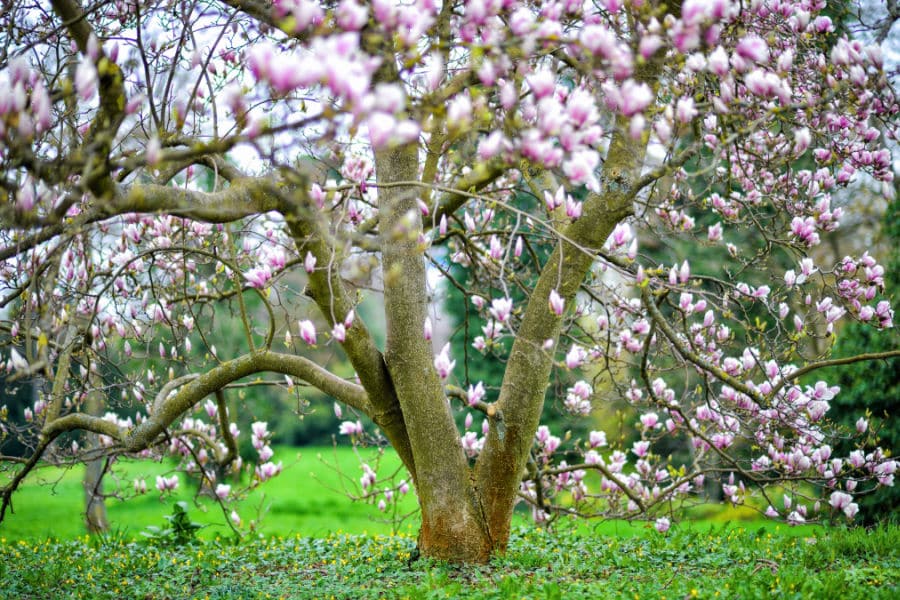
The Most Popular Trees to Plant in the Spring
Soon after the gloomy winter days are gone, Spring is all about blossoming fragrant flowers and verdant trees that fill the scene with colors and a fresh breath of air filled with cheer and chirping of birds. While spring is the season of blooms and blossoms, several trees are specifically known as spring trees for the extraordinary flora and colors they win during this lively season. To get notes of a few of these nature-blessed specimens, stick to the list of most colorful spring trees below.
Dogwood
The Dogwood tree stands out as the gardeners’ top-favorite ornamental tree for its astounding beauty, impressive growth, and incredible strength. Although a Dogwood tree might seem like a relatively small tree, it’s all-season spectacular beauty will have you amazed. One of the most popular varieties of this tree, the Flowering Dogwood holds a special place close to the heart of all tree-lovers, more specifically, Spring-lovers. This is because of its magnificent bloom – a dogwood tree blooms with snowy white flowers with two-lobed petals convened generously around a golden central pod. Each branch and each twig of this tree is adorned with heaps of flowers, altogether which makes a spectacular scene. Planting a Dogwood tree is an all-year win; you get showy blossoms during Spring, a vibrant crimson-purple foliage during fall, and delectably shiny red fruits to attract chirping birds during winters. It never fails to add a super-amazing contrast to gardens with red, pink, or evergreen trees in the background. Whether those are creepy woods or a barren backyard, a dogwood tree promises to bring in life with its brilliant white blossom, vibrant fall foliage, striking berries, and the unique pattern of its bark. For Spring lovers, the blossom of a dogwood tree is the ‘Happy Goodbye’ to the dreary days of winter. Easy tip: You can plant a dogwood tree at a reasonable distance from utility lines, sidewalks, and patios for it reaches a moderate height of 25 feet upon maturity.
Japanese Flowering Cherry
Known as one of the prettiest ornamental trees for small to medium-sized yards, a Japanese flowering tree is a conspicuous tree with multiple seasons of interest. The gorgeous pink blossoms of this tree double the rejuvenating feelings Spring brings in. It boasts with a profusion of roseate pink flowers having several petals tightly packed together. Starting from a bud, these saucer-shaped flowers unfurl to a size of almost 4 cm. Once completely unpacked, they exhibit a purplish central heart before they turn milky white and shed. Imagine a tree right in the heart of your yard densely blooming with gorgeously light pink flowers that fill the air with a pleasing rustling sound and a delicate fragrance. Progressing through Spring, during Summers, the Japanese Flowering tree grows rich with serrate green leaves and forms a dense canopy offering an excellent shade from the roaring sun. And as fall knocks in, these leaves warm up to a lighter shade of green before turning orangish-red. All a Japanese flowering tree needs to thrive in full sunlight (for good six hours each day) and moist soil that is rich in humus. Must bear in mind that these trees are not at all drought-resistant and need to be watered well. With little maintenance needs and an amazingly shaggy floral widespread, a Japanese flowering tree is an upright delightful showpiece not only for Springs but for all good seasons. Point to note: The Japanese Flowering tree is a small tree with a nominal height of up to 15 to 20 feet. It is relatively short-lived and shall only survive 15 to 25 years.
Redbud
If you’ve ever witnessed a Redbud tree in all of its spectacular floriferous glory, you’d know why is this one of the most colorful trees of Spring. Among the blues of beachy areas, golden hays of farms, grays of urban patios, or the greens of grassy lands, a Redbud tree is sure to dazzle like the brightest of stars on a dark sky. Sorry if the name made you think this was a crimson tree, as that’s not the case. The Spring blooms of a Redbud tree come off as a profusion of striking rose-purple flowers – lots and lots of them hanging down the twigs and branches of this tree. Once you are done admiring this magenta beauty, pop on these flowers and try eating them for they are edible. Generally, Redbuds are understory trees that grow well under the canopy of other huge trees. This flat-topped small tree thrives up to a height of 20 feet, with a growth progress rate of 12 to 18 inches per year. A Redbud tree is indubitably the top favorite of all the Spring lovers for this tree can never go unnoticed. These trees make excellent street-trees, lawn focal points, and show-stopping specimens among group trees. Fun Fact: It is rumored that Judas Iscariot, the legend, hanged himself to death on a Redbud tree after he deceived Christ. Being ashamed, the Redbud tree took the color red since then (which was white earlier). The Redbud tree is therefore also known as the Judas tree (less commonly).
